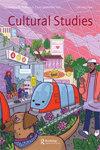丽贝卡·米德《我在米德尔马契的生活》中的女性读者
IF 1.2
3区 社会学
Q1 ANTHROPOLOGY
引用次数: 0
摘要
在女权主义学者进入这一领域之前,文学理论要么对女性读者不感兴趣,要么用她来代表一种阅读类型,这种阅读倾向于认同、逃避和愉悦,而不是参与文本的美学和形式方面。根据女权主义文化和文学理论家,如夏洛特·布伦斯登和丽塔·费尔斯基,女性读者通常被定义为被动和缺乏创造力,她的兴趣是琐碎和感性的,因此她的阅读是非政治性的。女性主义文学理论和女性主义文化研究长期以来一直在挑战女性主义和“普通”女性读者、学术和非学术读者、创造性和非创造性读者之间的尖锐分歧,指出她们比我们所认为的更相似,因为她们具有某些情感和认知属性。这种人为的二分法也受到了关于书籍和阅读的流行回忆录的质疑,这些回忆录展示了非学术阅读的创造力。一个例子是2014年出版的《我在米德尔马契的生活》,记者丽贝卡·米德讲述了她一生与乔治·艾略特的小说的关系。米德的书结合了文学批评、传记和回忆录,突出了文学对读者的影响。我把米德的书作为丽塔·费尔斯基“积极美学”理论概念的一个例子来读,积极美学是一种将批评和分析与依恋和爱结合在一起的文本阅读框架。运用费尔斯基的文本参与分类,如认知、魅力和知识,我认为米德的计划,通过同等重视阅读的情感和智力方面,代表了弥合学术和非学术读者之间鸿沟的重要一步。本文章由计算机程序翻译,如有差异,请以英文原文为准。
The woman reader in Rebecca Mead’s My life in Middlemarch
ABSTRACT
Before the entry of feminist scholars into the field, literary theory either had no interest in the woman reader or used her to represent the type of reading that favours identification, escape and pleasure over engagement with the aesthetic and formal aspects of a text. According to feminist cultural and literary theorists such as Charlotte Brunsdon and Rita Felski, the woman reader has typically been defined as passive and uncreative, her interests as trivial and sentimental, her reading as consequently apolitical. Feminist literary theory and feminist cultural studies have long challenged the sharp divide between feminist and ‘ordinary’ women readers, academic and non-academic readers, creative and uncreative readers, pointing out that they are more alike than we are led to believe because they share certain affective and cognitive attributes. This artificial dichotomy is also called into question by popular memoirs on books and reading, which showcase the creativity of non-academic reading. One example is the 2014 book My Life in Middlemarch, journalist Rebecca Mead’s account of her lifelong relationship with George Eliot’s novel. Mead’s book, which combines literary criticism, biography and memoir, highlights the impact literature can have on its readers. I read Mead’s book as an example of Rita Felski’s theoretical concept of a ‘positive aesthetics’, a framework for reading texts that blends criticism and analysis with attachment and love. Using Felski’s categories of textual engagement, such as recognition, enchantment and knowledge, I argue that Mead’s project, by giving equal weight to emotional and intellectual aspects of reading, represents an important step in bridging the divide between academic and non-academic readers.
求助全文
通过发布文献求助,成功后即可免费获取论文全文。
去求助
来源期刊

Cultural Studies
Multiple-
CiteScore
3.50
自引率
6.70%
发文量
0
期刊介绍:
Cultural Studies is an international journal which explores the relation between cultural practices, everyday life, material, economic, political, geographical and historical contexts. It fosters more open analytic, critical and political conversations by encouraging people to push the dialogue into fresh, uncharted territory. It also aims to intervene in the processes by which the existing techniques, institutions and structures of power are reproduced, resisted and transformed. Cultural Studies understands the term "culture" inclusively rather than exclusively, and publishes essays which encourage significant intellectual and political experimentation, intervention and dialogue.
 求助内容:
求助内容: 应助结果提醒方式:
应助结果提醒方式:


